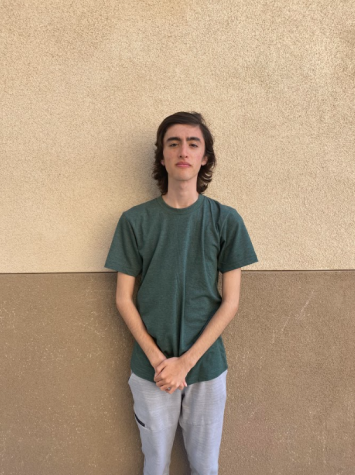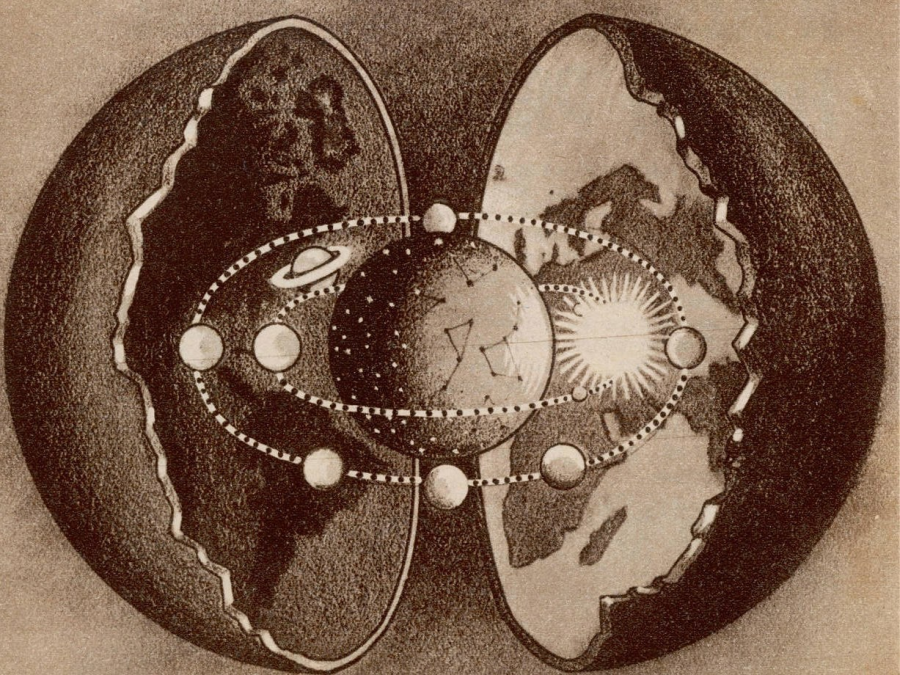Origins of the Hollow Earth Conspiracy
The Hollow Earth conspiracy, put simply, is the belief that the Earth is in fact hollow. This was put forward as an idea by Edmond Halley, a British astronomer — notably the same Halley who discovered Halley’s Comet—although the concept had existed before in early versions being mentioned in Shakespeare and other media. In 1692, Halley wrote a treatise that argued that the Earth was composed of different spheroids underground. Each sphere was said to have its own atmosphere and rotate at different speeds, explaining some magnetic anomalies that he had documented. Halley ran with the theory positing that the spheres were “luminous” and potentially inhabited, even claiming that the Aurora Borealis was caused by escaped fumes. Funnily enough, this theory was definitively debunked 82 years later by Charles Hutton, a British mathematician. By measuring the density of the Earth, he could tell that the Earth simply could not be hollow.
Although it is quite clear that the theory was not expected to make a resurgence, the concept of a Hollow Earth is not as alien to humans as one might believe. Taking form in the spiritual idea of the underworld, or afterlife, such ideas are intrinsically linked to various beliefs in an afterlife. When spread as a spiritual concept, this idea is much more widely accepted than the Hollow Earth theory, which presents itself as scientific and rational.
The theory was kept alive by two Americans: journalist Jeremiah Renolds and army Officer John Cleves Symmes Jr., who proposed various counters and conducted numerous experiments throughout the mid-1800s. From that point onwards, a trend was set that would survive swathes of loyal theorists with no scientific qualifications, attempting to prove hollow Earth’s validity with logic, reason and the scientific method. Prior to this, it had taken a different face, Cyrus Teed’s birth on Oct. 18, 1839 (a distant relative of Joseph Smith, founder of the Mormon Church). He was living a relatively normal life until, after being shocked badly at his job as an electrical physician, he passed out, waking to proclaim that he was visited by an angel. That angel revealed to him his divine purpose: he was the Messiah. To him, a metaphysical truth was unveiled and he created, or more likely popularized a variant of Hollow Earth, described as inverse Hollow Earth theory. He stated that we lived on the inside of a globe, the Earth’s crust was infinitely thick, the stars were chunks of ice suspended reflecting light and the sun was a lightbulb. Furthermore, he changed his name to “Koresh,” Hebrew for “Cyrus.” Obviously, none of this was true, and Teed died in 1906 after accumulating a decently sized following who called themselves “Koreshanians.” Though he had prophesied that he would be resurrected, after two days, his corpse began to show signs of decay. The cult quickly disbanded and his body was buried. Many of his followers dedicated their entire lives to Koreshanity, giving up everything they owned. It is not entirely clear whether Cyrus truly believed he had experienced a religious epiphany, but he certainly left that impression on the world. His theory was later adopted by various high-ranking Nazi officials, a part of a strange esotericism that went hand in hand with their pseudo-scientific genocidal ideology. One outlandish Nazi plan did account for — and intended — to make use of the supposed fact that the world was on the inside of a globe, but was never attempted. This is part of why Nazis are often associated with Hollow Earth. Some conspiracy theorists believe that the Third Reich by some method entered through a hole in the polar icecap to enter that world, contrary to the actual variant of the theory. It is important not to forget that their entire ideology consisted of similarly fabricated beliefs and justifications.
Engaging in outlandish conspiracy theories is often fun and harmless, but such theories can also be very detrimental. They erode trust in the sciences by promoting baseless conspiracy; a great example of this is Americans’ belief in Atlantis. The Annual Survey of American Fears, conducted by Chapman University in 2018, found that 57% of Americans believed that Atlantis exists, and around 27% believe in ancient aliens, a theory suggesting all ancient civilization was directly seeded by aliens, popularized in popular media. Conspiracies spread more when television networks like the History channel start broadcasting pseudoscience in order to increase viewership. This gets even worse when considering the rampant conspiracism and movements like QAnon that have emerged from the cesspits of the internet to take centerstage.













